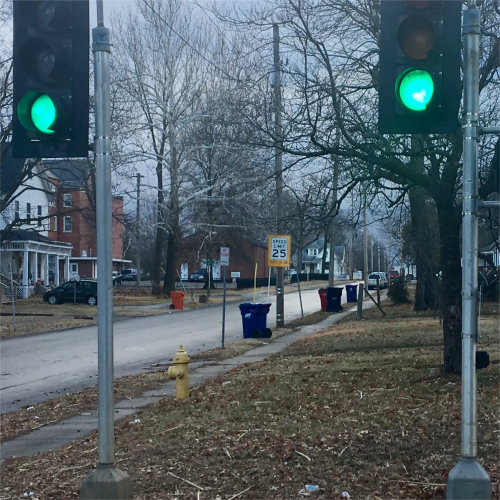Driving through a busy intersection is often a frustrating experience. While waiting at a red light, if there is a vehicle passing by in the opposite direction, we may wonder why there are two traffic lights in one lane. There’s a logical explanation for this common phenomenon on the road, so let’s dig into the reasons behind it.
One of the main reasons for having two traffic lights per lane is to improve safety. At busy intersections with heavy traffic, it can be difficult for drivers to see the traffic lights directly opposite their location. By placing two traffic lights on each side of the intersection, drivers can easily spot the lights even if their view is blocked by other vehicles or objects. This ensures everyone can see the traffic lights clearly and react accordingly, reducing the chance of an accident.
Additionally, having two traffic lights in one lane helps ensure proper lighting and visibility for drivers coming from different directions. In some cases, depending on the specific design of the road and intersection, it may not be feasible or practical to place a single traffic light directly in the middle. This can result in poor visibility for drivers approaching the intersection, leading to confusion and potential collisions. With two traffic lights, drivers approaching from different angles can clearly see the signal that applies to them, making traffic smoother and safer.
Another reason for the existence of two traffic lights is to facilitate pedestrians. Pedestrian safety is crucial, especially in busy urban areas. There are two traffic lights on each side of the road that display specific signals to pedestrians crossing the road. This ensures that both drivers and pedestrians are aware of each other’s movements and can safely pass the intersection without conflict.
In addition to safety considerations, the presence of two traffic lights also improves traffic efficiency. When a light turns green, vehicles on one side of the intersection can start moving, allowing traffic to flow. At the same time, vehicles on the opposite side of the intersection were also stopped by red lights. This alternating system reduces congestion and helps maintain a steady flow of traffic, especially during peak hours when traffic volumes are higher.
It is worth mentioning that the presence of two traffic lights is not always necessary. At less busy intersections or areas with lower traffic volumes, a single traffic light may be sufficient. The location of traffic lights is determined based on factors such as traffic patterns, road design, and expected traffic volume. Engineers and traffic experts carefully analyze these factors to determine the most appropriate setup for each intersection.
In summary, having two traffic lights in one lane serves an important purpose: to improve road safety and efficiency. Using two traffic lights helps reduce accidents and congestion by improving visibility, making it easier for pedestrians, and making traffic flow more smoothly. So next time you find yourself waiting at an intersection with two traffic lights, you can now understand the rationale behind this setup.
If you are interested in traffic light, welcome to contact traffic light company Qixiang to read more.
Post time: Sep-12-2023







